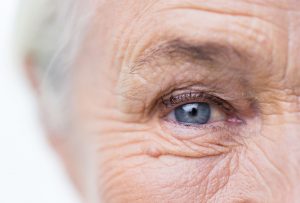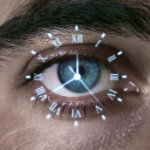About Dry AMD (Age-Related Macular Degeneration)

Q. I was told I have dry AMD by my eye doctor. What is AMD?
A. AMD is age-related macular degeneration. Although there are many types of macular degeneration, age-related macular degeneration (AMD) is by far the most common type. AMD is a disease associated with aging that gradually destroys sharp central vision that is needed for seeing objects clearly and for daily tasks such as watching TV, working on a computer, and driving.
In some cases, AMD advances so slowly that people notice little change in their vision. In others, the disease progresses faster and may lead to a loss of vision in both eyes. AMD is the leading cause of vision loss in Americans 60 years of age and older.
The dry form of AMD is much more common than the wet form of the disease. In the dry form, small yellowish deposits called drusen form on the retina causing it to eventually deteriorate.
Treatment
The cause of dry AMD is unknown and there isn’t an FDA approved treatment or cure at this point. However, there are many clinical trials currently underway.
Studies have shown that a healthy lifestyle is a key to keeping dry AMD at bay. Eating antioxidant-rich foods, such as fresh fruits and dark green leafy vegetables (such as spinach and kale), may delay the onset or reduce the severity of dry AMD. Also, incorporating fatty fish such as salmon that are high in omega-3 can help. Adding exercise to your schedule every day is important too.
For my patients with dry AMD I usually recommend the AREDS2 formulation which has shown to slow down the progression and reduce the risk of dry AMD. At Ophthalmic Consultants of the Capital Region we use PRN Macular Vitamin Benefit.
If you have been diagnosed with AMD it’s important to see a retina specialist who can help protect your vision.

